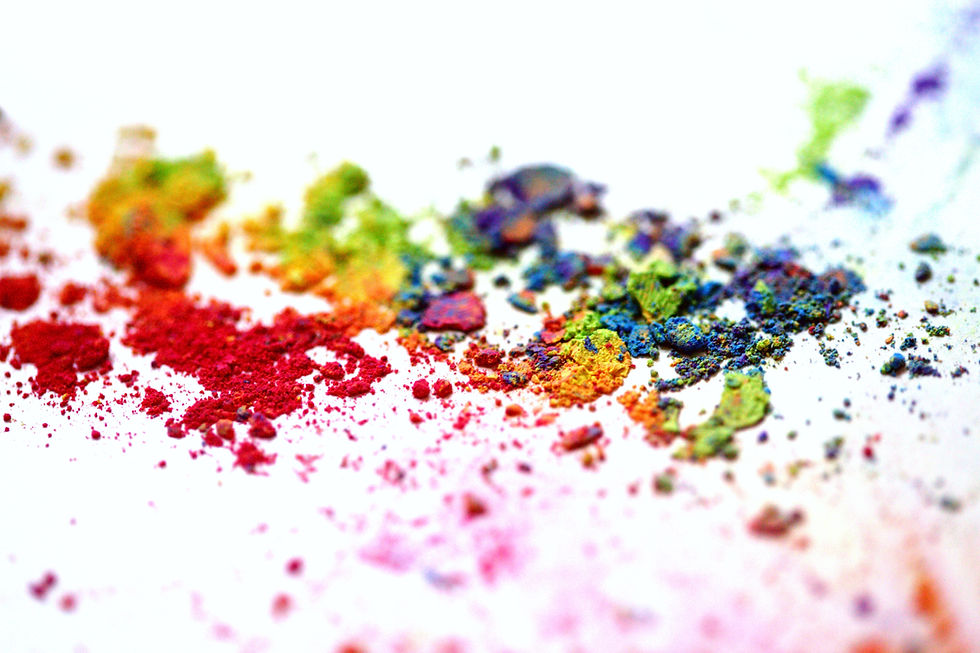Let there be light: All About Luminous and Reflective Pigments
- Laura Longoni

- Mar 5
- 2 min read
Updated: Mar 9
In my previous post I gave you an overview about the different types of pigments that are used to create acrylic paints.
Now I would like to explore two categories of pigments that have the ability to use the light (by absorbing or reflecting it) and give us wonderful light effect for our paintings: the luminous pigments and the reflective pigments.
Luminous Pigments
Luminous pigments are effect pigments that can absorb light energy and give it back, making them glow in the dark. According to the way they react to light we can find two types of luminous pigments:
Phosphorescent Pigments
This pigment group, containing phosphoro and mainly used in "glow-in-the-dark" product, can absorb any kind of light from any light source and then slowly release it over time for a long-lasting glow. The longer the light is absorbed, the more the effect will last.
Fluorescent Pigments
These pigments, on the contrary, absorb ultraviolet (UV) light and immediately re-emit it as visible light when under a UV light source.
Reflective pigments
Differently from the luminous pigments, the reflective pigments have the ability to reflect a huge amount of the light spectrum, improving the visibility and reducing at the same time the heat absorption of a surface. We could say that reflective pigments are the opposite of absorption pigments.
They work better when mixed alone to an acrylic binder or to a polyurethane varnish and used as a coating on another colour: under daylight they will give the colour a glittering finish (1); in a dark environment and under direct light they will have a strong (fast diamond) shimmer (2).
Can we mix glow-in-the-dark pigments to other types of pigments and mantain the glow effect?
Even though glow-in-the-dark pigments work best alone or mixed to a transparent binder and used as a coating, another test that I made was to mix the luminous pigments to other effect pigments such as mica based pearl pigments or chameleon pigments to see if they could mantain their glowing effect.
In all cases I observed that the glowing effect disappeared as soon as the mixture had a high pigmentation and a low transparency.
What is better to create a glow-in-the-dark effect? A comparison between phosphorescent gel and luminous pigments.
As last consideration I would like to spend some word about the use of a phosphorecent gel to create a glow-in-the-dark acrylic paint compared to the direct mixing of phosphorecent pigments.
In the past I did many trials, both on dark surfaces and on a white surface, to add the gel to my absorption pigments based acrylic paints and, every time, the results where disappointing: I could only get a very weak glow, even when I added the gel with a proportion of 6 part of gel to 1 small part of paint. The only colour that seemed to react was titanium white.
I hope you enjoyed the post and you could find more inspiration for your next project to bring it to shine brightly in the dark.
Thank you for reading. If you liked the post, leave a like, a comment and don't forget to follow my blog, Instagram and Threads and share the content on your social media.
I wish you a bright and creative day!
Laura







Comments